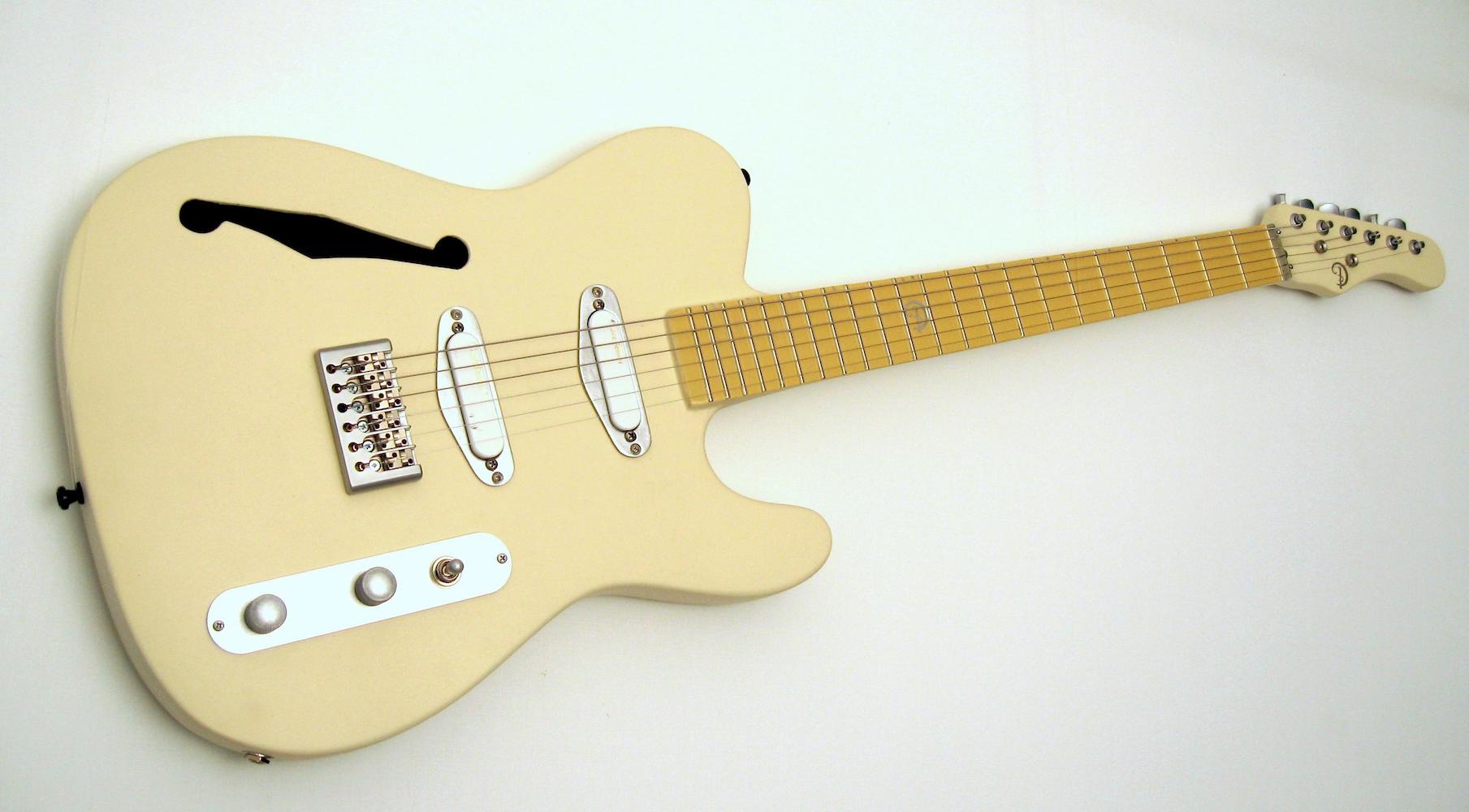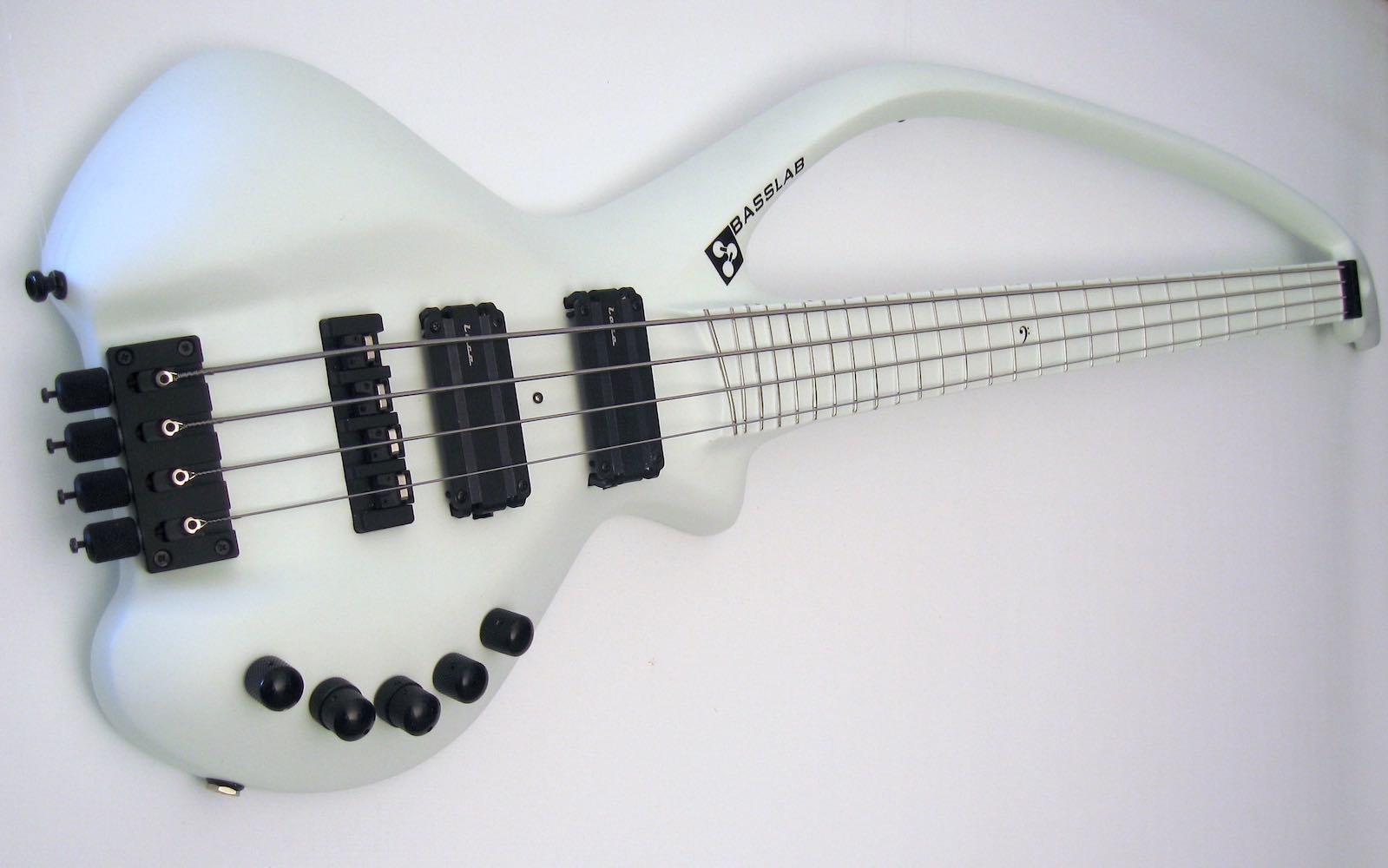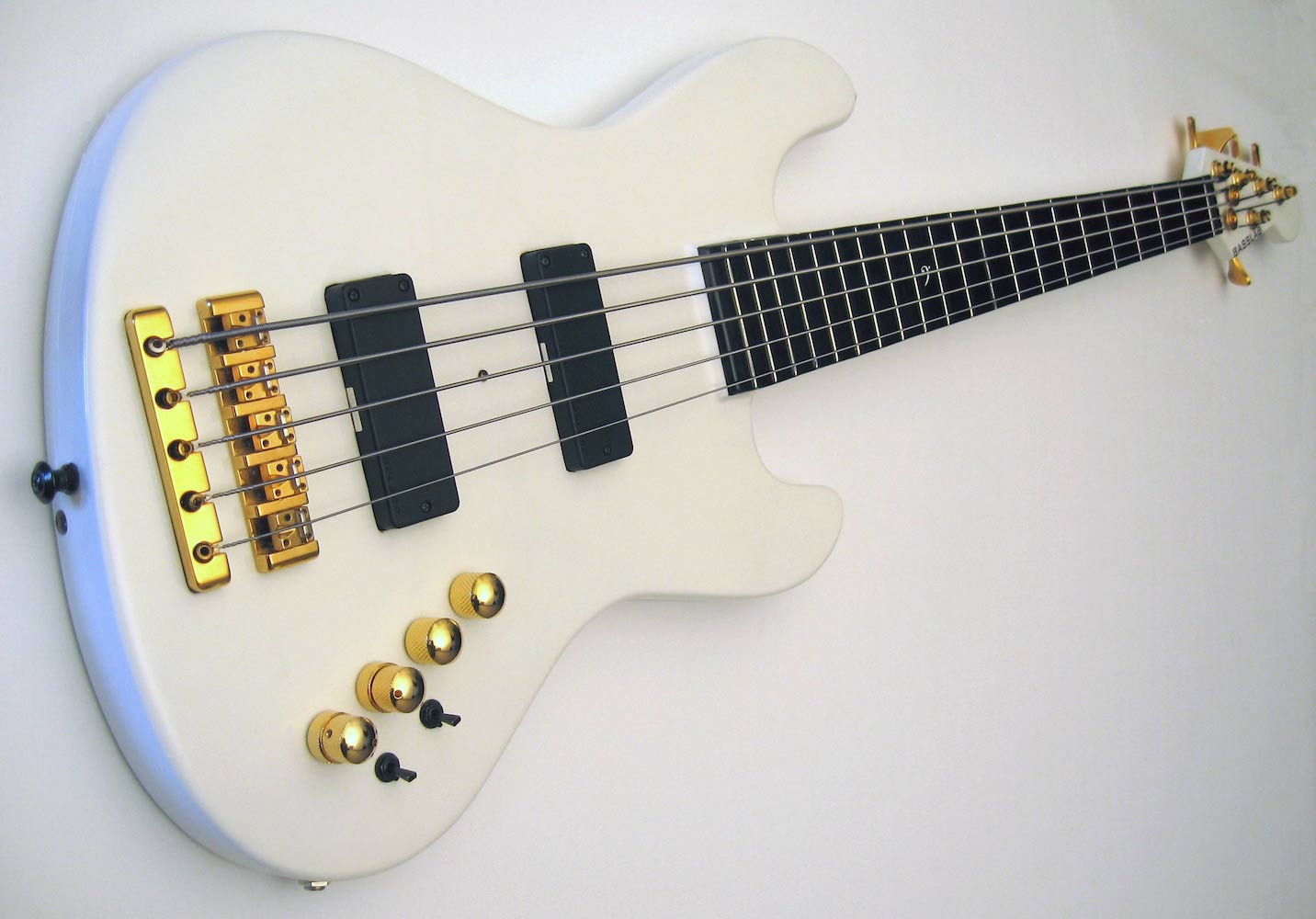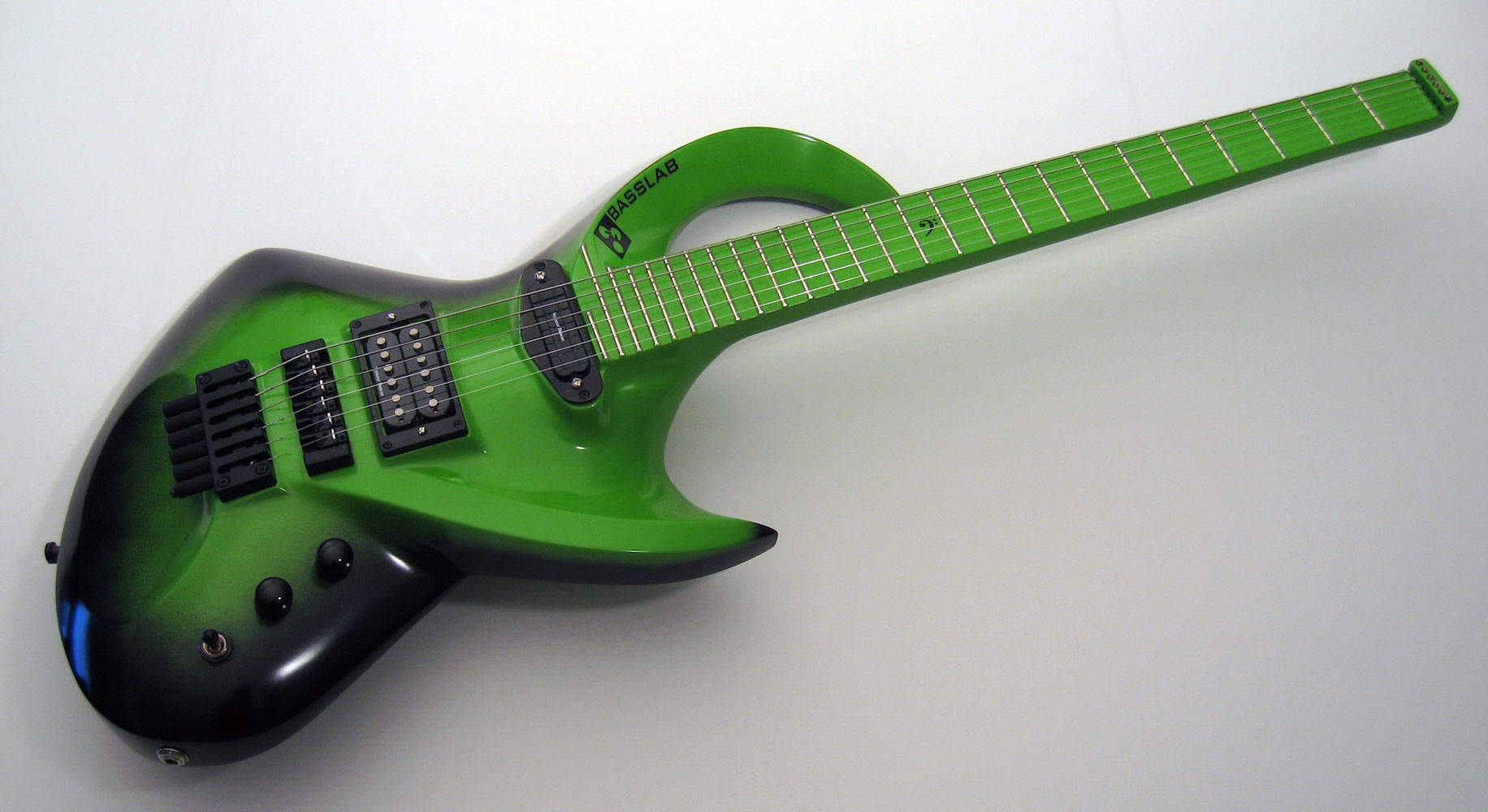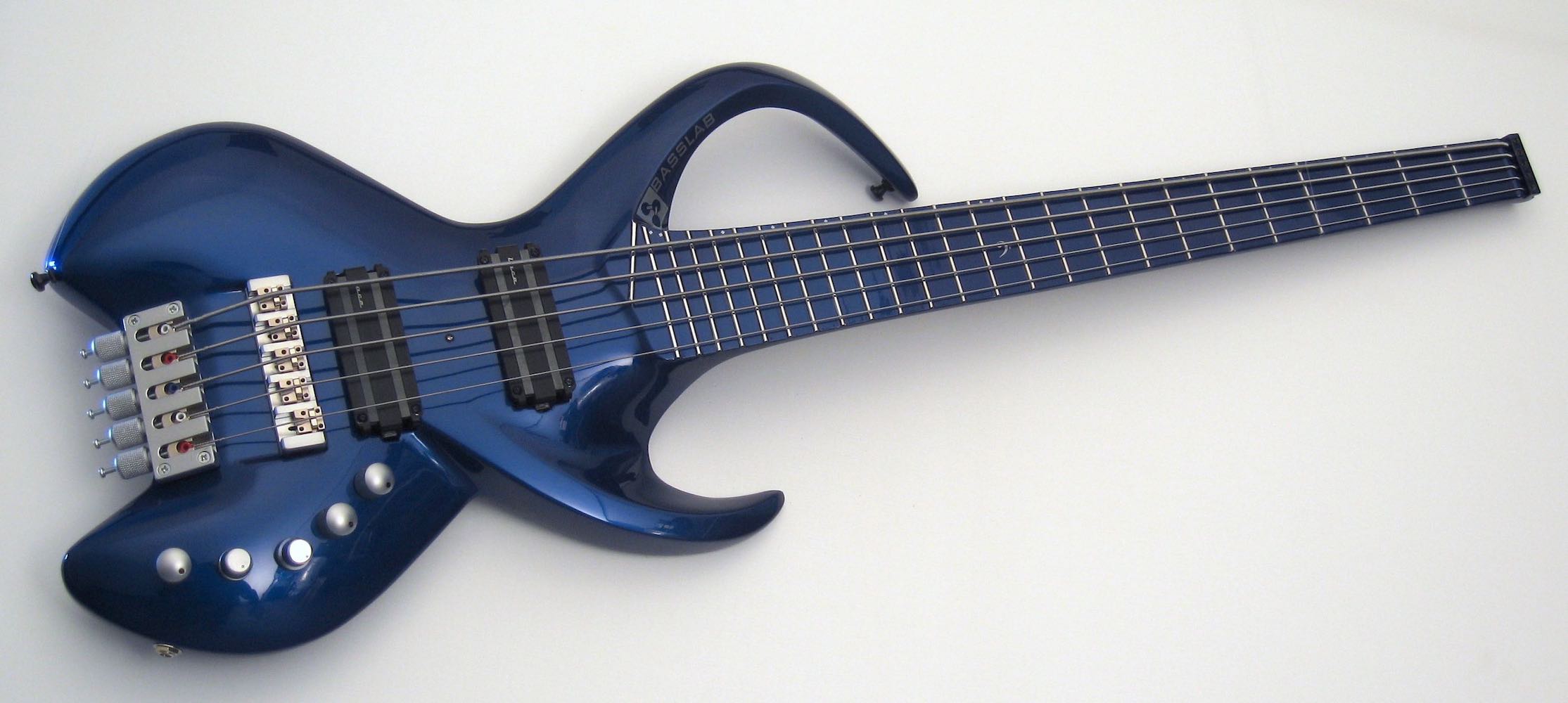Welcome and thanks for looking beyond the mainstream!

Our main concern is tone, using new materials and constructions - developed by a musician and physicist. We use a highly innovative method, following a deep and longtime research on physics. Our ergonomic designs result in instruments that supersede the playing comfort, sound and design of conventional instruments. BassLab instruments are handmade "monocoque" one-piece, fully integrated acoustic and extremely lightweight hollow bodies.
Tuneable composite
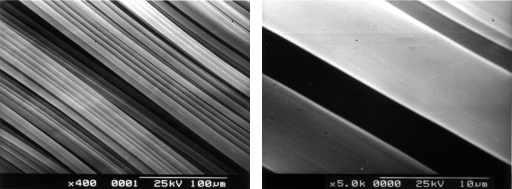 Tuneable composite
Yes, this is not wood and why should we use an acoustically absorbing material for a musical instrument?
New materials are being used more and more, Still, most make no creative use of these highly flexible materials, using standard tech, initially developed with no connection to acoustics.
We use carbon for stiffness, but add others to the mix for tone. It’s called "tuneable", because we can also alter the tone.
And we did refine ours within the last more than 20 years of building.
(Left is a raster electron image of some carbon fibers, 100µm + 10µm scale).
Tuneable composite
Yes, this is not wood and why should we use an acoustically absorbing material for a musical instrument?
New materials are being used more and more, Still, most make no creative use of these highly flexible materials, using standard tech, initially developed with no connection to acoustics.
We use carbon for stiffness, but add others to the mix for tone. It’s called "tuneable", because we can also alter the tone.
And we did refine ours within the last more than 20 years of building.
(Left is a raster electron image of some carbon fibers, 100µm + 10µm scale).




